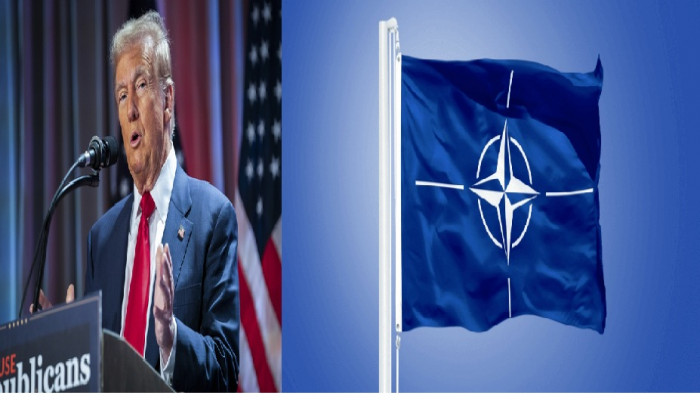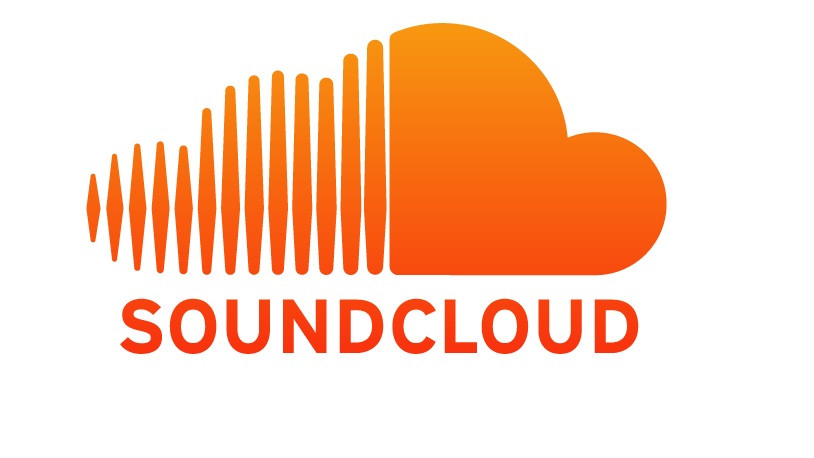Trump 2.0 era and the Future of NATO: An Indian Perspective
- In Military & Strategic Affairs
- 10:44 PM, Apr 08, 2025
- Harsh Sinha & Dr. A. Adityanjee
Lord Ismay, the first Secretary General of NATO, described the purpose of the North Atlantic Treaty Organisation (NATO) to “keep the Soviet Union out, the Americans in, and the Germans down” in Europe’s strategic and security architecture. In 1949, the NATO defensive pact was signed by twelve countries on both sides of the North Atlantic. But as of now current membership consists of 32 countries. Post- “Liberation Day”, during President Donald Trump’s second term as the 47th President of the United States, his administration has already created a storm in U.S. foreign policy, specifically with NATO.
Trump's repeated criticisms of NATO, his transactional foreign policy approach to alliances, and his demands for greater European defence spending have rekindled doubts about the long-term viability of NATO. Even during his first term, Trump had teased the idea of quitting NATO but was persuaded to stay with promises of internal reforms by NATO countries and greater fiscal burden sharing.
We examine the most important challenges facing NATO during Trump's second term presidency, such as burden-sharing, European strategic autonomy, NATO’s role in the Russia-Ukraine war and the US commitment or lack of it to put American boots on the ground for a hot conflict. Moreover, we analyse the implications of NATO's shifting dynamics for India and outline policy suggestions to guide New Delhi through the shifting global security environment.
Key Issues Under Trump’s Second Term
Trump has insisted that NATO allies need to pay more for their own defence, iterating the fact that the U.S. would not necessarily honour the provisions of NATO’s Article 5 collective defense obligation for those member nations that do not reach the 2% GDP defense spending benchmark. During his election campaign, he often repeated:
“If they don’t pay, we don’t protect.”
Such an approach has set an alarm on the European NATO member countries, and especially those of Eastern Europe, which are almost exclusively dependent upon American security guarantees. Former NATO Secretary-General Jens Stoltenberg had responded by pressing the member nations to increase military expenditure to retain American support.
The conditionality in support of the US for NATO resulted in a rekindling of latent demand for European demands for "strategic autonomy." French President Emmanuel Macron has initiated attempts to create a European Defense Union, contending that Europe needs to be ready for a future in which the U.S. has a lesser role in trans-Atlantic security.
Germany and France have deepened talks under the EU's Permanent Structured Cooperation (PESCO), a platform for creating autonomous European defense capabilities. Portugal's Defense Minister Nuno Melo also hinted that his nation could choose European fighter jets over U.S.-produced F-35s because of fears about Trump's policies at NATO (Reuters, 2025). Other European countries are also reconsidering the purchase of F-35 fighter jets owing to the fickleness of the US foreign policy establishment.
If the above trends persist with some more developments, then it is possible that Clausewitzian trinity of NATO may get disturbed, and it may encounter internal splits among European countries that seek more autonomy and those whose defense capabilities and internal decisions get intertwined with the U.S. security assurances.
Additionally, the Trump administration's policy towards Russia may be called deliberate ambiguity. As Trump has offered to broker a ceasefire in Ukraine, the members of NATO are concerned that his policies could undermine Western deterrence against Russian belligerence.
Reports suggest that Russian President Vladimir Putin has also been skeptical of a mooted 30-day ceasefire, seeing it as an opportunity for Ukraine to reorganise militarily (The Times, 2025). Meanwhile the countries like Poland, Estonia and Lithuania urged the boost in the deployment of NATO troops along the eastern front to act as a deterrent against possible Russian advances.
Most importantly, the evolving challenge of NATO is Türkiye's increasing military cooperation with Russia, along with its disillusionment with the EU for its pending membership application for decades.
President Recep Tayyip Erdoğan's move to buy more Russian S-400 missile defense systems has again triggered tensions in the alliance. Trump's reaction to Türkiye's balancing act between Russia and NATO is unclear, but a transactional American policy might further stress unity in NATO. As Türkiye increasingly gravitates towards Moscow and Beijing and claims to be pretender to a Caliphate under Recep Tayyip Erdoğan, it may become increasingly difficult for NATO to have a concerted strategic vision, undermining the combined defense position of the alliance.
India’s Perspective on NATO’s Evolution
India is not a NATO member but is deeply invested in the alliance's stability and enjoys substantial strategic interests. Despite this, India’s policy planners and strategic thinkers are wary of NATO’s mission creep into Asian security theatre including Afghanistan and the West Asia and North Africa (WANA) region. Any substantial change in the structure or focus of NATO will have knock-on effects on Indian defense alliances and regional security calculus.
If Trump downgrades NATO, America may reallocate more military strength to meet China in the Indo-Pacific to de-hyphenate the US policies in the region. This can go along with India's strategic interest in consolidating the Quadrilateral Security Dialogue (Quad) with America, Japan, and Australia. Yet, a mercurial US foreign policy also generates apprehension that American commitment in Asia may be unstable which requires more perspicacious understanding.
2. India's Defense Partnerships with NATO Members
Some of the NATO member nations, such as France, Germany, and the UK, are India's major defense partners in bilateral frameworks. If European nations move toward greater strategic autonomy, India might seek stronger bilateral defense arrangements independent of US to preserve military ties.
Second, India must factor in the implications of US-NATO tensions on its defense procurement policy. If NATO splits, European defense industries would try to diversify sales outside the alliance, offering India a chance to diversify defense imports.
3. Russia's Role and the India-Russia Relationship
A diminished NATO would encourage Russia, realigning the balance of global power. India has traditionally enjoyed close defense relationships with Russia, depending on Moscow for critical military equipment. Yet, as the West puts pressure on countries to cut Russian arms imports, India will have to reconcile its strategic independence with diplomatic realism and convert this into a ripe opportunity for greater diversification.
Possible Scenarios During Trump's Second Term
Scenario 1: NATO Develops a Tiered Membership System
If Trump adopts a "pay-for-protection" system, NATO might develop into a two-tier alliance with only high-paying members enjoying full security assurances. He has already shifted the goalposts for NATO members from 2% of national GDP on defense to 5% in recent weeks. This would dilute collective defense pledges and push European countries to create independent security alliances.
A fractured NATO might decrease European involvement (sans France) in Indo-Pacific security, leaving India to reinforce regional defense alliances on its own through a multi stakeholders’ approach.
Scenario 2: A US-Led Shift to the Indo-Pacific
If Trump diverts US military attention from NATO to the Indo-Pacific, the Quad grouping may become more important. This might lead to enhanced US-India defense relations, intelligence exchange, and joint military drills. However, India must remain cautious about too close an involvement with the US owing to a lack of predictability and reliability.
A possible implication for India is enhanced military relationships with the US and its Indo-Pacific allies. Possible pressure on India to reiterate its defense relations with Russia in a ‘chaoplexic’ situation
Scenario 3: Greater European Defense Autonomy
If European countries can build autonomous military institutions without a US security umbrella, NATO might become less necessary as a security organisation, however there is a possibility that it may evolve as a unique kind of diplomatic deliberation platform
Implications for India will be new opportunities for India to interact with European defense industries and possible diversification of arms imports, lessening reliance on US and Russian vendors.
Policy Recommendations for India
1.India may aggressively negotiate stand-alone defense cooperation in the form of strategic theaterisation with principal NATO members (France, Germany, U.K.) to secure ongoing doctrinal synergies in military ties, independent of NATO's internal issues.
2. India may capitalise on the European Union's quest for strategic autonomy by suggesting joint defense R&D initiatives and co-production plans, particularly in the context of 7th generational warfare or WBOM (Warfare by other means).
3. India needs to pursue its strategic autonomy by sustaining close yet independent defense relationships with Washington and Moscow. This will enable India to enjoy US military technology while continuing to have access to Russian defense systems.
4. If NATO falters, India may need to insist on a greater role for the Quad in the Indo-Pacific theatre, despite India’s reservations about converting it into a military alliance or a pact. Quad will become an important component of security architecture with the ability to counter Chinese Wolf Warrior Diplomacy.
In conclusion, President Trump's second term brings a synaptic nature of disarrayed narratives to NATO's future and its certainty. His transactional style of alliance commitment, changing relations with Russia, and demands for European defense spending have brought divisions within NATO.
For India, the transforming or diminishing NATO order creates challenges and opportunities alike. By deepening defense bilateralism, balancing American and Russian ties, and deriving the benefits of European defense sovereignty, India can navigate this new security environment to defend its strategic stakes.
5. NATO is an anachronism and dinosaur from a Trumpian perspective. It is in a phase of terminal decline and possibly on its deathbed. It may not survive the turbulence generated by the chaotic foreign policy pursued by the Trump 2.0 regime. The raison d’etre for NATO survival and continuance as a military alliance no longer exists. Any contingency arrangements for future strategic planning by India must take this possibility into serious consideration.
References
- CBS News. (2025, March 7). Trump casts doubt on NATO solidarity.
- Reuters. (2025, March 14). Portugal wary of Trump's NATO policy in pick of fighter jets.
- The Times. (2025, March 14). Putin skeptical about Ukraine ceasefire proposal.
- Politico. (2025, March 6). Trump’s comments raise NATO concerns.
- US News. (2025, March 14). European response to Trump's NATO policies.
- Observer Research Foundation. (2025, February 20). A New EU-India Strategic Agenda in 2025.
- Foreign Policy. (2025, March 10). Trump’s Second-Term Foreign Policy Challenges.







Comments